All about garden arches
Garden arches for flowers and climbing plants are a good addition to landscape design. From the material of this article you will find out what they are, what features they have. In addition, we will show you where it is best to place them.
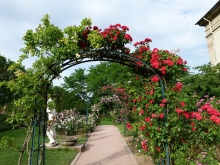

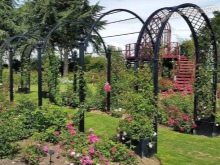
Peculiarities
Garden arches are decorative and functional. They decorate parks and recreation areas, look good in landscape design and have a number of features, for example:
- support climbing plants;
- create a shadow;
- shape the architectural style;
- are the basis for hammocks / swings;
- support supporting pillars;
- are a method of zoning places of rest and work.
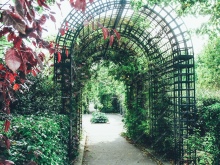
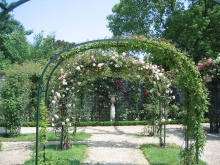
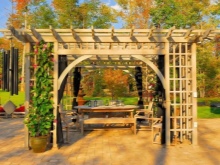
In most cases, these structures are the entrance to the garden area. It is also a unique design of climbing plants (such as wild grapes, climbing roses, bindweed, clematis). They can be simple and complemented by seating in the shade in the garden. They make unique arched corridors connecting the entrance to the adjoining territory and the house itself.
A garden arch may or may not have a crossbar at a height of at least 2 m. The total height can be much greater. The minimum width of the product is 1.2-1.3 m.
It has a solid and stable structure with a pleasant design, which is more noticeable in the winter season, when the arch is not braided by vines.
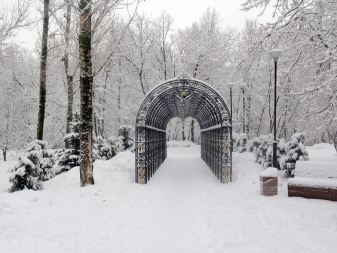
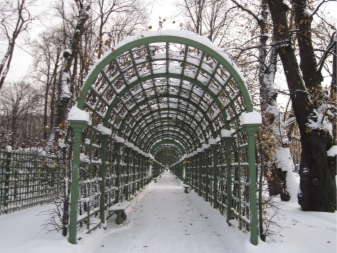
Garden arches can be of any shape and size. They can be installed in different parts of the garden (local area). By the type of manufacture, they are arched, with direct overlap and overlap in the form of a house. They can be ordered or made independently from different materials.
Most often, garden arches are single prefabricated structures. However, today you can do it yourself or order volumetric structures (pergolas). If there is a lot of space on the site, you can fill it with several repeating elements, creating a flower corridor, for example, along a garden path.

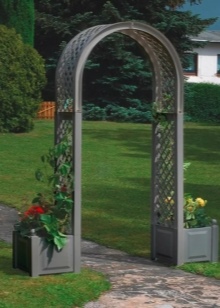
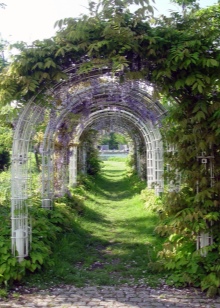
According to the method of assembly, the products are collapsible and stationary. Variants of the first type can be dismantled. Stationary models do not imply transfer to another location of the site. By the presence of illumination, structures are simple and with lighting that complements the light of lampposts. In addition, they can be forged, wicker, cast, slatted, lattice.
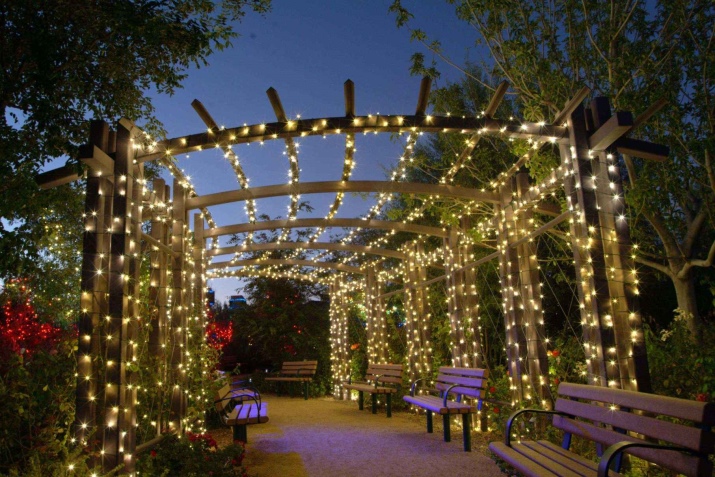

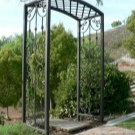
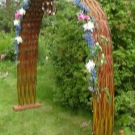
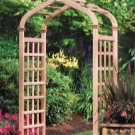
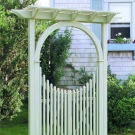
Materials (edit)
In the production of garden arches, different raw materials are used (wood, vine, metal, plastic, brick). Each type of material determines the design and operational features of the products. Consider the characteristics of the most popular of them.
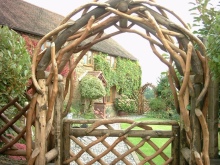
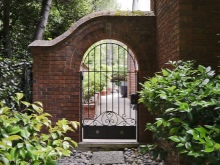
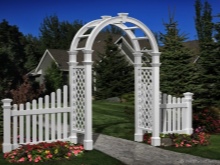
Wood
Garden arches made of wood are classified as decorative structures of the budget type. It is these products that are in great demand among summer residents and gardeners. They are easy to do on your own, with the necessary equipment at hand. The material has a low density and optimal weight.
Despite the environmental friendliness and beauty of wood, such arches are short-lived due to the tendency of wood to permanent deformation. They need annual care (painting, treatment with special compounds that prevent cracking and decay of the material). They need to be treated with substances from insect pests.
Such arches are made from timber and untreated wood. They can be completely wooden or combined (supplemented with metal elements). In addition, the arch can consist of different types of wood. It is easier to decorate a tree by choosing a design for a different style of landscape.
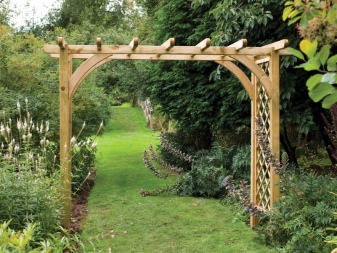
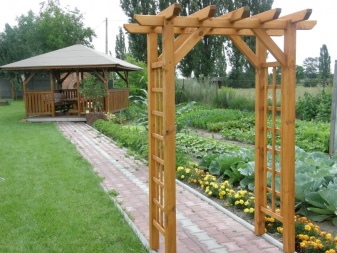

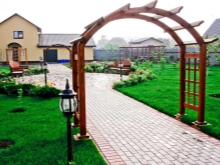
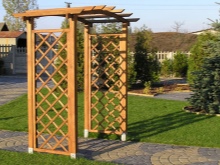
Metal
Metal garden arches are made from thin rods, profiles, fittings. They are durable (serve for several decades), durable, reliable, aesthetically pleasing. They are eye-catching and allow you to create unique compositions in the landscape. However, without proper treatment, they are exposed to corrosion.
The most beautiful and expensive designs are forged varieties with fancy curls and patterns. The advantages of the structures are stability and ease of site preparation. The disadvantage of the products is the need for constant painting. In addition to forged, metal arches are welded.
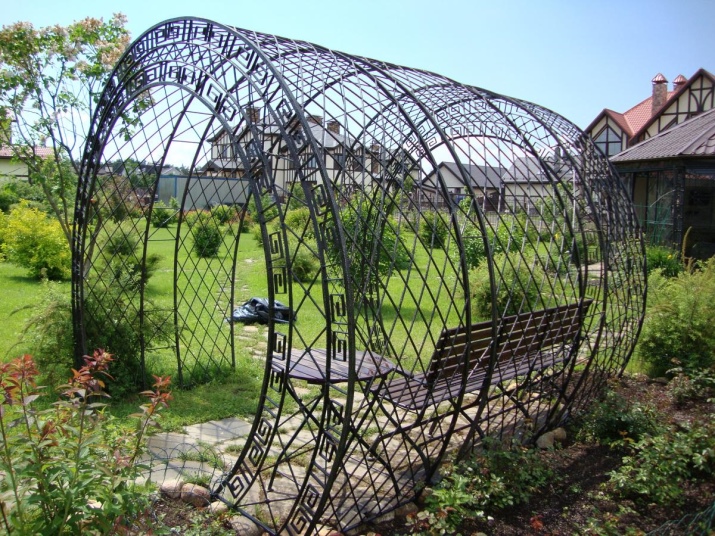
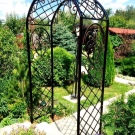
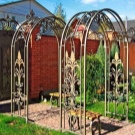
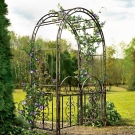

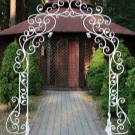
Stone
Stone arches are notable for their solidity, good quality, give the status of the territory being drawn up. Due to their durability the location has to be considered with great care. Due to their massiveness, they are installed in large areas (they look ridiculous on small ones). The installation of such arches is carried out by professional bricklayers.
Such arches are erected from brick, natural and artificial stone. If the design requires it, they are plastered.
When properly installed, they can stand still for hundreds of years, barely noticeably losing color. In most cases, they do not need to be greased with a solution, restored, and even more so protected from harmful insects.
Their prices depend on the type of material chosen for the construction. But such gates perform not so much a functional as a decorative function. They cannot become a support for climbing plants. Rather, they are architectural elements that support the overall design style of a particular landscape.
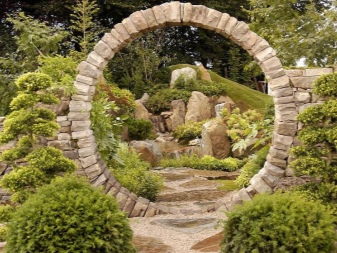
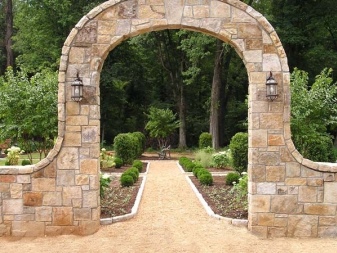
Plastic
A plastic garden arch is the best option for decorating the local area in a modern style. Its price is cheaper than analogs made from other materials. Products made of PVC or polypropylene do not need painting, treatment with anti-bugs. They are resistant to rust and decay, and differ in the quality of the joints.
When self-made, the raw materials for them are cuttings of water pipes. Plastic can have different shapes and shades, however, it is characterized by a considerable number of disadvantages.
It has a short service life, it is sensitive to temperature extremes, which makes it impossible to leave it outside in winter.
The collapsible design does not withstand low temperatures. It has to be dismantled, which is a significant drawback. As for shades, most often plastic models are produced in three colors: white, green, brown. Another nuance is the instability of plastic to ultraviolet radiation. From this, during operation, it not only burns out, but also deforms.

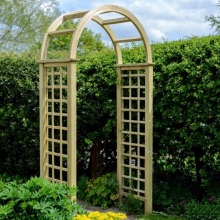
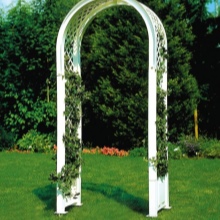
Design
The design of a garden arch depends on its size and landscape design. A common type of construction is a trellis (a lattice arch made of metal or wood). It is small, and therefore suitable for location in any part of the garden or local area.
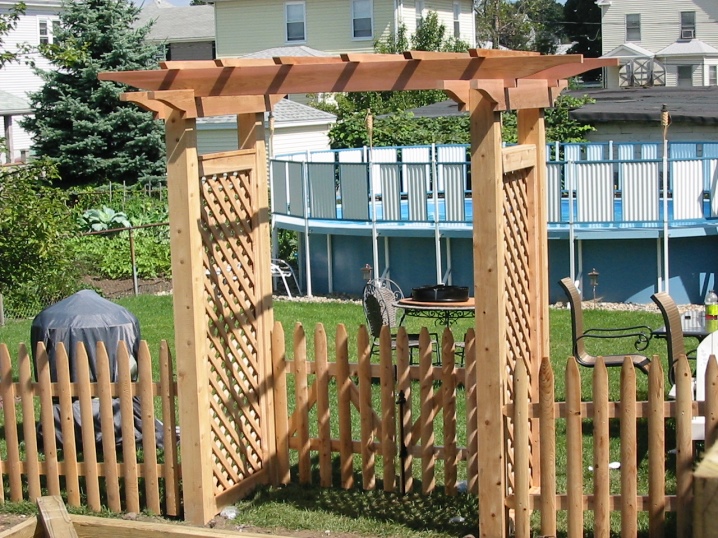
Trellis is also popular (trellis arch, consisting of several trellises connected together). Gardeners use such structures to protect benches, creating a shady place to relax. Depending on preferences, the product is often supplemented with a ceiling covering, giving the arch the appearance of a summer gazebo.
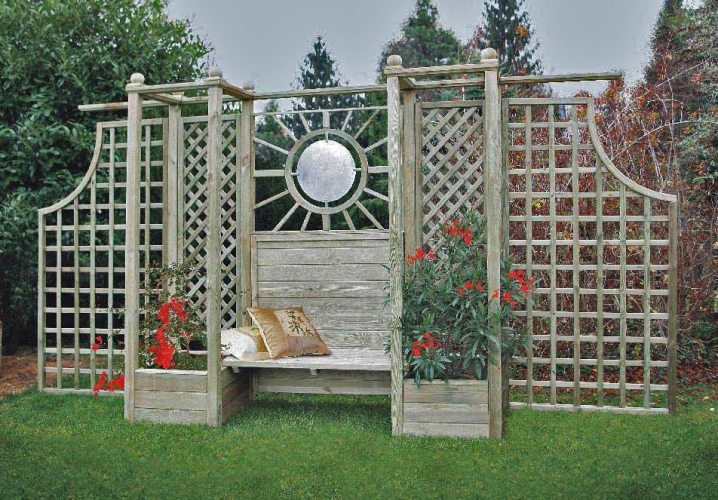
Volumetric options "tunnel" ("tunnel") are more difficult to implement and do not look appropriate in every landscape design - they need a lot of space. To simplify installation, they order several identical arches, building an arched group.
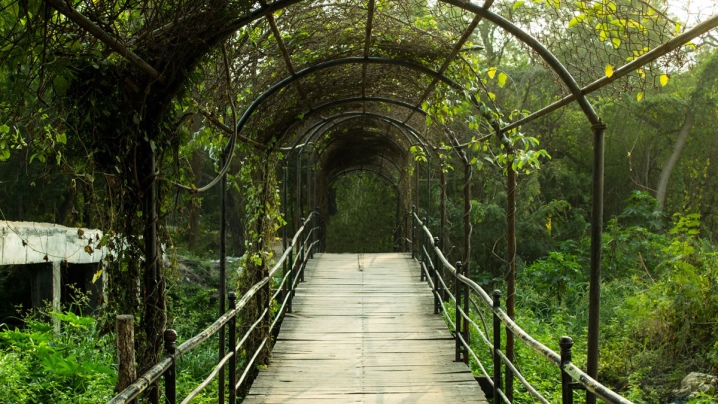
Street arched structures for perennial plants are square, triangular, rectangular, vaulted, round. Also, the design may resemble a canopy. The upper part of the arches is domed, semicircular, straight. According to the type of execution, structures are divided into 2 types: angular, straight.
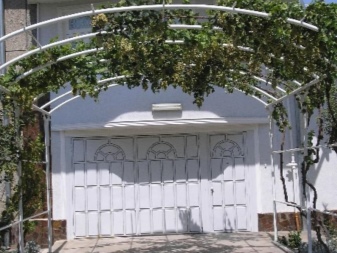
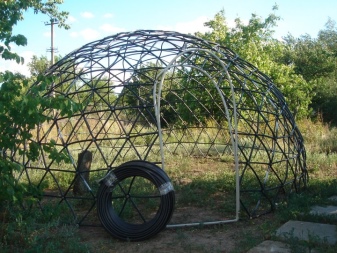
Openwork arches with and without a stand look beautiful on summer cottages and garden plots. Depending on the design, they can be simple, ornate, complemented by flower stands. Patterned varieties feel airy and are suitable for embodying different styles.
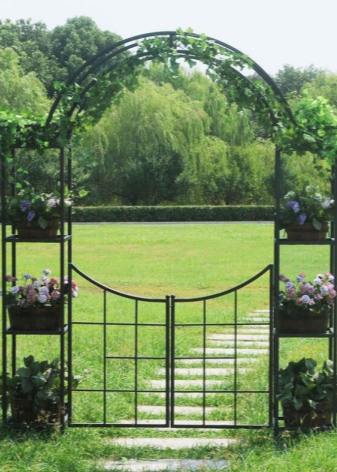
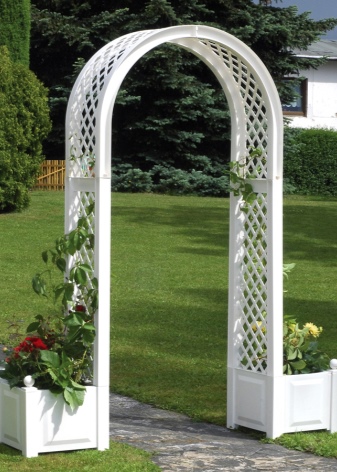
The type of openwork arches can be non-standard. For example, the design may resemble two trees intertwining with branches. It fits perfectly into the design of the resting place, making out the entrance to the flower garden area with benches. This accent attracts attention without pulling it onto itself.
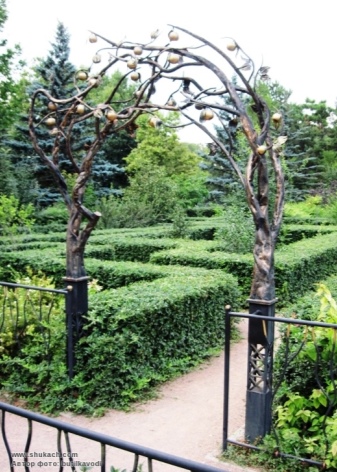
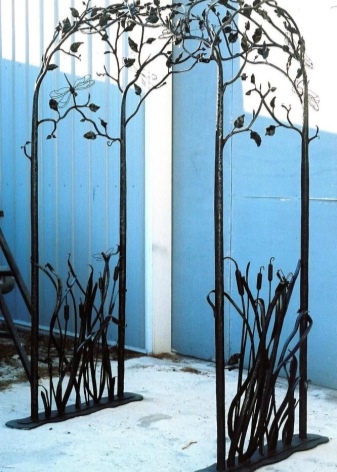
The original functional and decorative buildings can resemble benches with high openwork backs and flower-like sidewalls. At the same time, flowers can also braid the structure along the side walls. Abstract options often have a semi-arched shape.
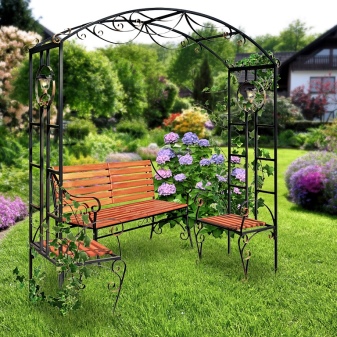
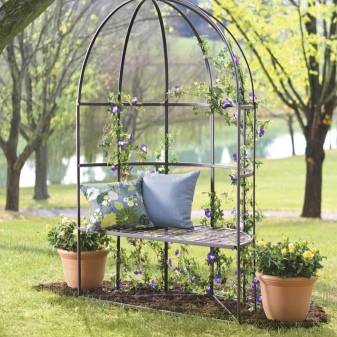
As for the color, it is limited only by the style and imagination of the customer. White constructions successfully convey the vintage atmosphere. They are used to decorate the landscape of the site, for example, in the Provence style. Warm woody tones are good for eco-style. Other options are decorated with glowing garlands.
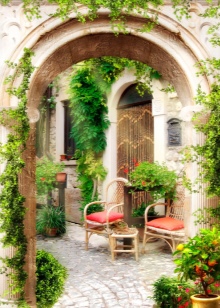
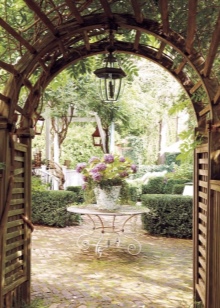

Besides, green constructions are often found. They merge with the shade of greenery of climbing plants, they look fresh in summer. At the same time, they are often characterized by a small thickness, which gives them a more aesthetic appearance and similarity to plant stems. The design of these varieties is varied (from lattice to lace).
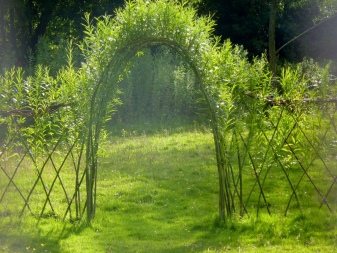

Where to place?
The location of the garden arches depends on the features of the landscape planning of a private (country) house or summer cottage. In this case, the type of construction chosen and its design are important. For example, single garden arches set as compositional accents of landscape design. When choosing a place, they proceed from the fact that the arch looks harmoniously on the site.
If flower corridors are conceived, arches are mounted in groups. Options designed for gazebos also look beautiful. As a rule, they are located in the garden near the house.
In addition to decorative accents, arches can be used as camouflage of household parts, using as wall decoration, complementing with benches for seating.
They can be placed not only in the garden - it will be successful to be placed in the courtyard at the entrance to the house (gazebo) or, conversely, near the gate of the house. A weighty argument for choosing a location is the possibility of creating a reliable base (concrete, tiles).
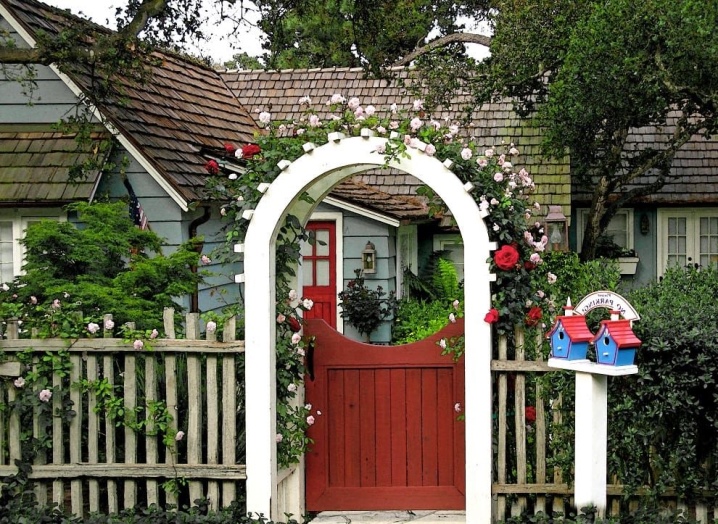
The arch can mask a technical room. Besides, it can be placed above the wicket. Often, such designs are chosen to break down narrow and long paths into conventional parts. They are installed next to benches and benches. They decorate garden fences, making the landscape design complete.
Sometimes such structures are installed near terraces and verandas. Structures can become elements of zoning, they separate groups of benches, creating secluded summer gazebos. They can be the entrance to a home playground or a resting place by the pond.
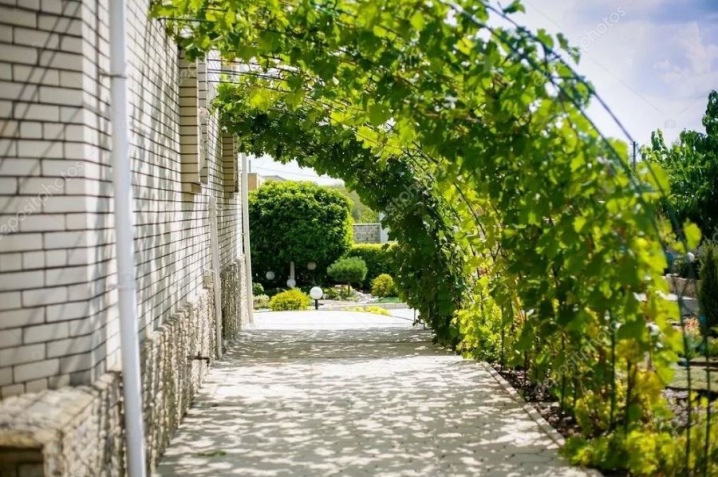
They make excellent flower holders. Small models are usually used for these purposes. They make original tents, under which you can set summer tables for tea drinking in the fresh air.

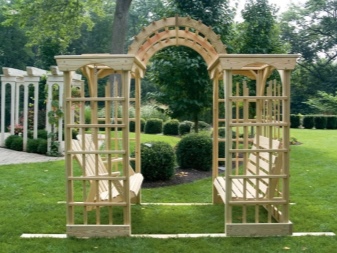
Beautiful examples
We offer 10 ideas for a successful site design using garden arches.
- Flower arch-tunnel with benches for rest. An option for decorating the space of a spacious plot in the country.
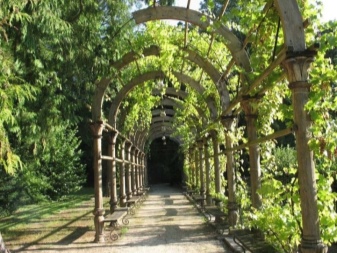
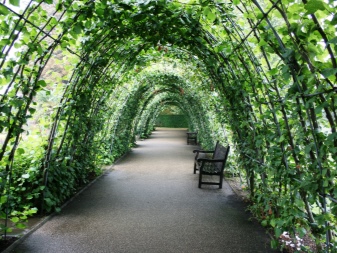
- Small arbor archdesigned to shade the summer dining area.
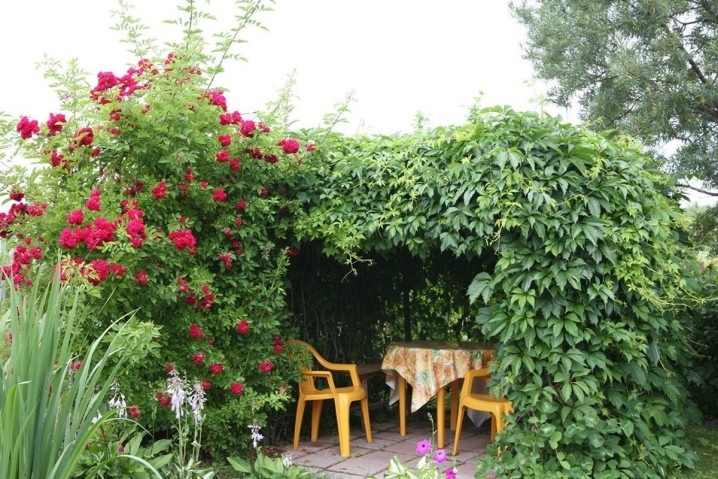
- Single wrought iron arch with lace curlsseparating the path to the greenhouse in the country.
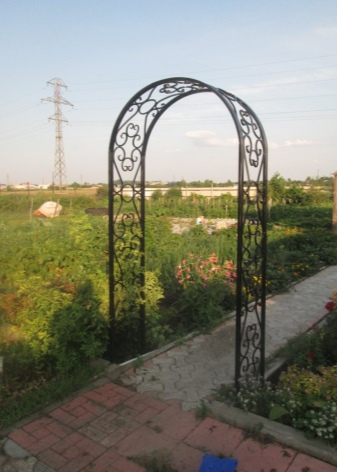
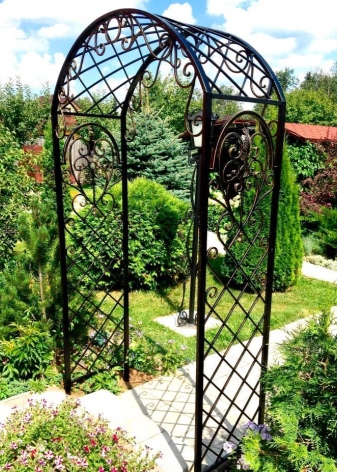
- Arch with a top-house, giving a special flavor to the landscape of a spacious area.
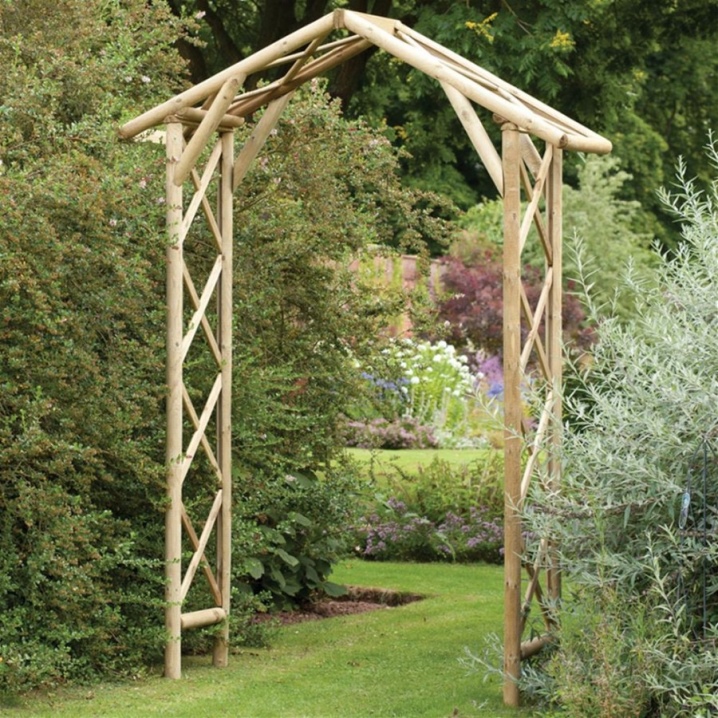
- Lattice arch made of wood, complemented by wooden flower beds, decorating the entrance to a private house.
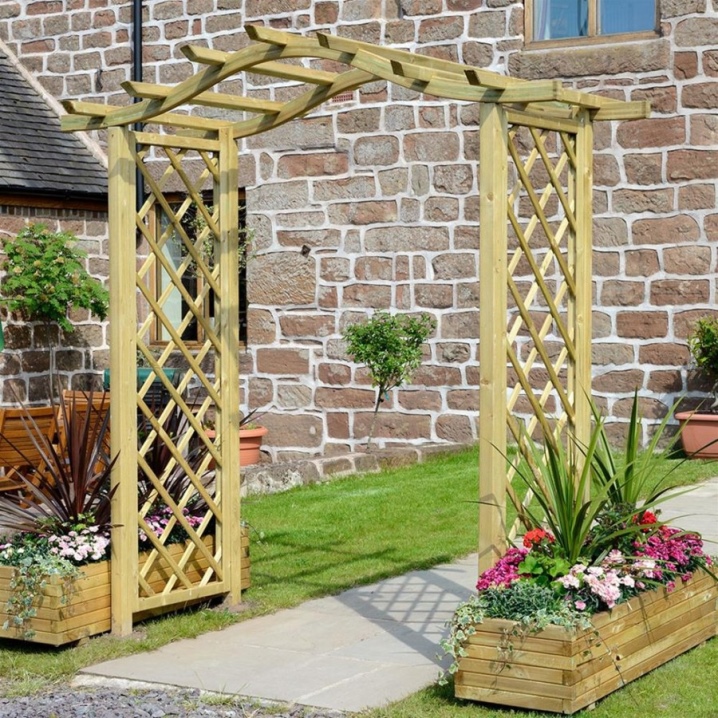
- Round metal structure, able to decorate the landscape of a large country house.
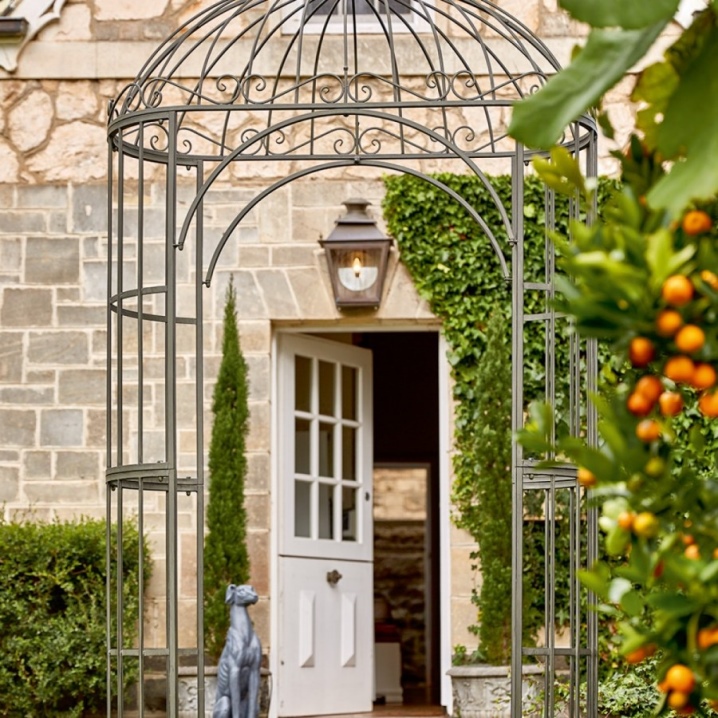
- Metal corner type design option, chosen for the decoration of the local area.

- Outdoor design with flowers and a seat for twoselected as a recreation area.
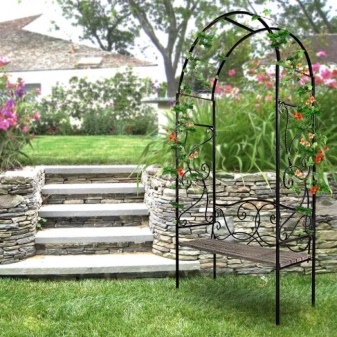

- Reception of garden flowers decoration with small arches, were chosen arches of green color and different sizes.
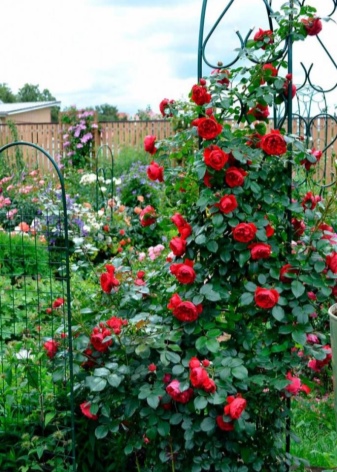
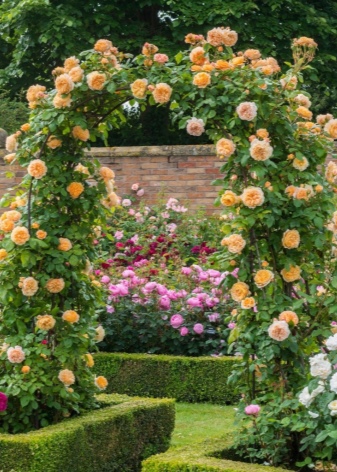
- Wide arched design in the form of a long corridor, consisting of identical elements.

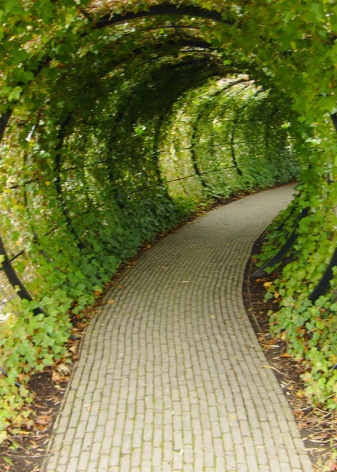













The comment was sent successfully.